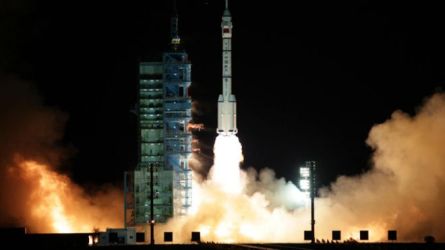China has successfully launched the crewed Shenzhou-9 capsule and docked it with the Tiangong space station in low earth orbit.
The Long March 2F rocket launched on 16 June from Jiuquan in north-central China, carrying three taikonauts (as Chinese astronauts are known), including the nation's first female taikonaut. The crew docked with Tiangong on 18 June, accomplishing China's first crewed in-space docking.
The docking was conducted using automated flight controls. During Shenzhou's stay, the capsule will undock and conduct several manually-controlled dockings.
"First, the two vehicles will be separated. Then the astronauts will control the spaceship autonomously and realize manual rendezvous and docking with the target vehicle and form the complex again," says China Manned Space Engineering, the nation's primary crewed launch agency. "After finishing the scheduled missions, the two vehicles will be separated for a second time. The spaceship will return to the landing site and the target vehicle will maneuver to long term operation orbit."
While docked, the crew will perform medical experiments, despite which the docking is viewed largely as a technical demonstration. The crew will undock on 24 June and return to Earth, landing in the Gobi Desert in western China.
An uncrewed docking was conducted in 2011 using Tiangong and a virtually identical Shenzhou-8.
 |
|---|
©CMSE |
Tiangong is far smaller than the International Space Station (ISS), and is not permanently crewed. China has plans to build a much larger orbital space station by 2020.
China's first crewed launch occurred in 2003 with a single taikonaut. The 16 June launch with three crew aboard is the largest crew the nation has launched.
China is only the third nation to launch people into orbit.
Source: Flight International


























